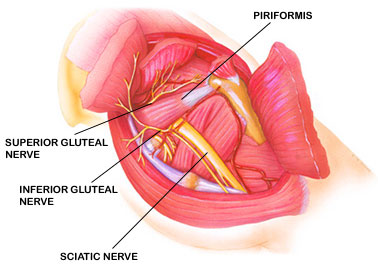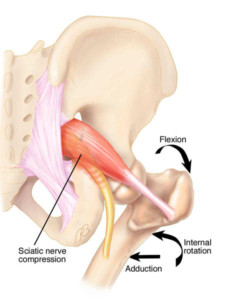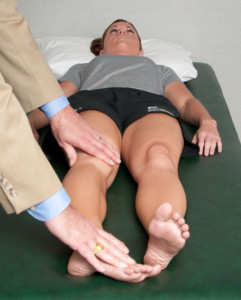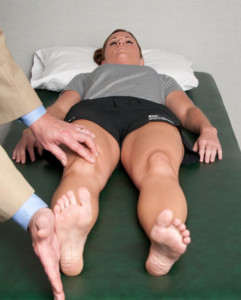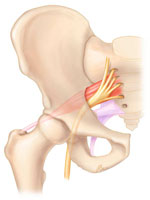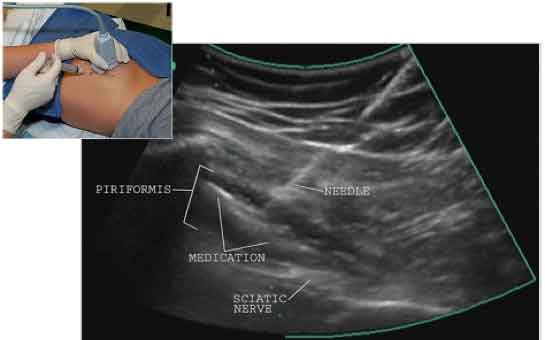Piriformis syndrome is a diagnosis that probably gets overlooked and overused in equal proportions. It is characterized by buttock pain exacerbated with sitting and is usually associated with sciatica characterized by radiating nerve pain extending from the back of the hip down the leg towards the outer side of the ankle. However, numerous disorders can create these type of symptoms. Approximately 95% of sciatica is due to nerve root irritation in the lumbar spine. This can occur in people who do not even have much accompanying back pain. Recalcitrant sciatica usually obligates a more extensive investigation of the lumbar spine, sometimes including an MRI. Less frequently, sciatica can originate outside of the lumbar spine. For these cases, the piriformis muscle may be the culprit. The piriformis is a small muscle that exits through a notch in the back of the pelvis along with the sciatic nerve. The nerve passes underneath the muscle and courses down the back of the leg while the piriformis crosses over to attach on the back of the hip. Either from trauma or overuse problems, the muscle can compress the sciatic nerve and characteristically cause pain in the back of the hip as well as radiating sciatica symptoms. If piriformis syndrome is suspected, this can be substantiated by palpation of the piriformis from inside the pelvis where the muscle and nerve exit together through the sciatic notch. Office-based ultrasound-guided injection of the piriformis is another useful diagnostic entity that can also be used therapeutically with concomitant instillation of corticosteroid.
Symptoms are typically especially worsened by sitting, including buttock and/or sciatica radiating leg pain. Listing to the opposite side is a common position to try to alleviate symptoms.
Tenderness is elicited by palpating the Piriformis over the back side of the hip. This is challenged because of the large overlying Gluteus maxiums muscle.
Location
2004 Hayes Street
Suite 700
Nashville, TN 37203
Office Hours
Monday-Friday:
8:00 am – 5:00 pm
